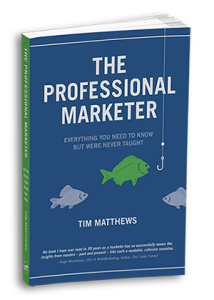Estimated Reading Time: 2 minutes
Given the glut of information buyers face every day, a successful marketing campaign needs to say something interesting, relevant, and meaningful. And, it needs to say it over and over again.
 Marketers refer to the collection of carefully chosen words and phrases that they use to describe their offering as a message platform. The message platform is the master document on which a lot of other writing will be based. All communication should conform to the message platform.
Marketers refer to the collection of carefully chosen words and phrases that they use to describe their offering as a message platform. The message platform is the master document on which a lot of other writing will be based. All communication should conform to the message platform.
There are many ways to format a message platform, and content may vary from company to company. Regardless of the specifics, however, a proper message platform should contain at least the following six elements:
- Buyer priorities and needs – This element summarizes your buyers’ top priorities or needs. Market segmentation and buyer profiles will yield this information, and it should be limited to the “short list” of what your buyers care most about. An acute knowledge of needs and priorities will help writers and other marketers better understand your buyers and the context in which they make decisions.
- Positioning statement – a positioning statement is a short statement that demonstrates the value of what you offer, how it differs from competing products and services, and how it has a meaningful impact on your audience. The positioning statement can cover an entire company, a product line, or an individual product.
- Key messages – Recall that the positioning statement is intended to help internal audiences understand your desired position in the marketplace. Obviously, however, you also need to convey this message to the external marketplace. To accomplish this task, marketers create key messages, which are short statements that phrase your product’s value in terms the buyer will understand.
- Proof points – Proof points are the supporting evidence that validate and give credibility to the key messages. Whereas key messages are complete sentences, proof points are bullets. Each key message should be supported by two to three proof points. Well-crafted proof points will make your messaging more powerful and help cut through the cynicism and inattentiveness toward marketing messages that “data smog” has fostered.
- Value proposition – The “value prop” is what—hopefully—your salespeople will be repeating every time they meet a new prospect. It describes what you have, the customers for whom it is intended, and what benefits they will gain from using it. Although this sounds straightforward, think of all the times a salesperson has tried to explain to you what he or she is selling. Five minutes into the monologue, you still have no idea what the product is or why you should buy it. Somewhere, a marketing person did not do his or her job of arming the field staff with a value proposition.
- Copy blocks – Copy blocks are fleshed-out messages, in full sentences, that can be dropped into marketing assets, whether direct mail, e-mail, advertising, or some other medium. The best practice is to provide short, medium, and long versions, usually twenty-five-, fifty-, and hundred-word blocks that describe your company and its offerings.
The figure below shows how all the pieces of the message platform fit together, starting with buyer priorities and needs on the more strategic end, and finishing with completed copy blocks that can be used as is on the delivery end.

 Want to learn even more about marketing?
Want to learn even more about marketing?